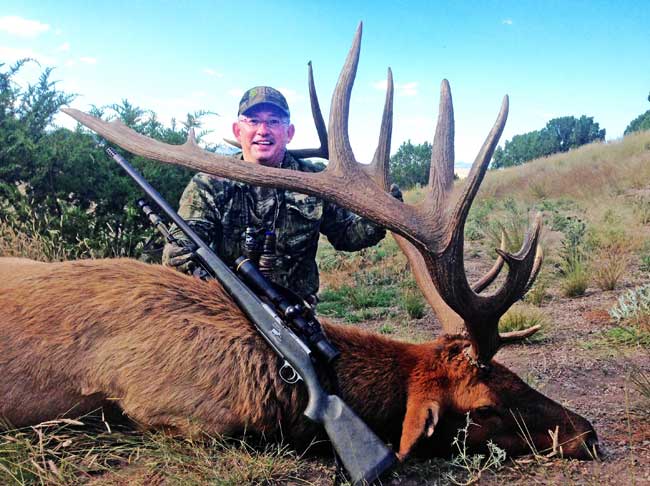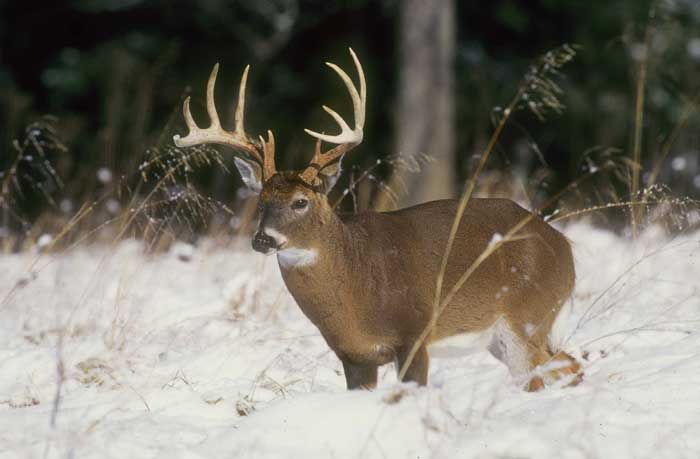Ralph Ramos | Mossy Oak ProStaff

One reason I like to guide elk hunters is to see them be ruined to it. Hunting anything else other than elk becomes less of a challenge and reward. I believe that elk hunting is the best hunting. My joy comes in seeing the expressions on my hunters’ faces when they release their innermost feelings after a bull goes down. I've seen grown men cry from joy as they’ve experienced those feelings that come when calling elk in close in the middle of the rut and having bulls screaming at them, often at less than 50 yards.
For me, elk hunting is an addiction that I feel every hunter should experience at least once in his or her lifetime. By being a guide, I can hunt every weekend of elk season and all of the holidays. My satisfaction comes from putting that bull where my hunter can take him. For me, calling a bull in for my hunter, videoing the hunt for my hunter and often putting that bull in my hunter’s lap is far more rewarding than pulling the trigger on a bull for myself. I'm often asked, “Ralph, when did elk hunting change for you from enjoying the hunt and the calling of a bull that you took yourself to calling an elk for other people?” I think that my enjoyment of the hunt is still an ongoing process that started about 10 years ago.
In mid-November, I had just gone on an elk hunt. I had a bull tag, and I called in 16 bulls and never pulled the trigger. My daughter had already taken a bull, so my freezer was full of meat. I was looking for a really big trophy bull. I found and called a couple of bulls that would score 380 or better on Boone and Crockett, but I just never could quite seal the deal on those two. They went into some really rugged country and vanished.
We have quite a bit of good, late-season elk hunting here in New Mexico, since most elk hunters prefer to hunt during the rut when the elk are bugling. However, in the late season, you can still take a trophy bull, because the bulls often will be in bachelor groups. After the rut, the bulls go off into their own world to try and survive during the winter months. In New Mexico, we don’t really have migrating elk like you find in many other elk states. During the late season, the bulls will move away from the cows, and they’ll start shedding their horns in early February.
One of the advantages of hunting late-season bulls is that they usually return to the same places they’ve been in the year before, making them much easier to find. However, the really big bulls, like the herd bulls, often move out to solitary areas away from the other bulls and cows. The bigger bulls generally will hang out on the sunny sides of mountains during the late season. The hunt for these bigger bulls is usually a spot-and-stalk type hunt, which makes good optics critical.
Besides looking at the north side of mountains, knowing where the water sources are is another great place to find late-season bulls. Although the bulls won’t be bugling in the late season, I like to use aggressive lost cow and calf calls. Once I get into an area where I've located bulls, I look for well-worn elk trails. I’ll walk these trails and give numbers of lost cow and calf calls. At this time of the year, elk hunting is much like predator hunting. I get to a spot where I have a good wind and can see a long ways, and then I set up and start calling for about 20 minutes. Often a bull will sneak in just to see what’s happening with this cow and calf. If a bull doesn’t come in, then I leave that stand, continue to give lost cow and calf calls and work farther down the trail.
Go to Ramos Hunts & Video Productions on Facebook to learn more about these New Mexico hunts.
Get John and Denise Phillips’ offer of a free cookbook, “Miz Denise’s Outdoor Cooking: More Than 35 Recipes for Elk and Mule Deer.”
Ralph Ramos has been a member of the Mossy Oak ProStaff for about 20 years. After years of pursuing elk, Ramos became a guide and has been leading hunters to elk for at least 20 years. Elk hunting is a physical challenge for most, but Ramos continues to face the challenge year after year.




























